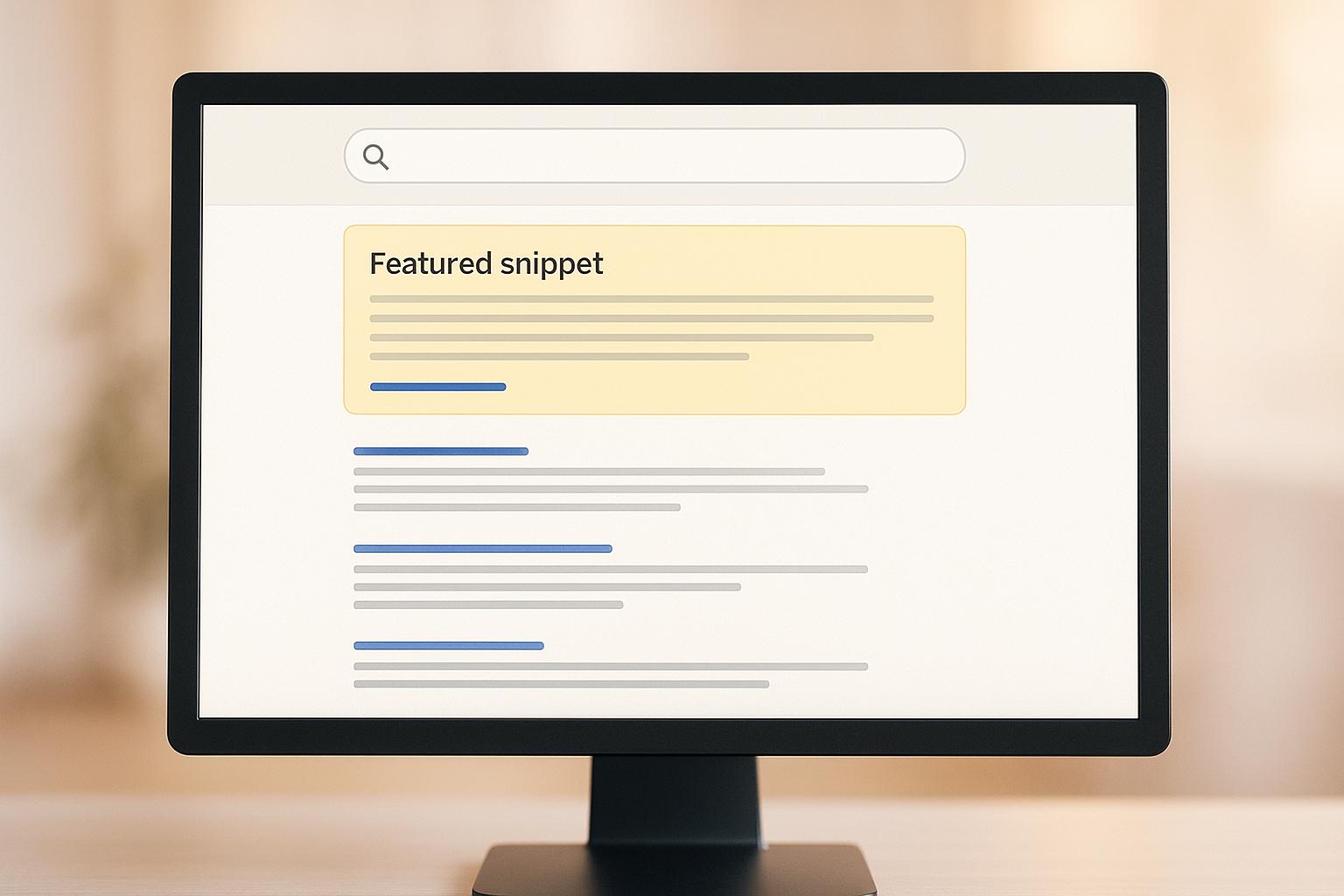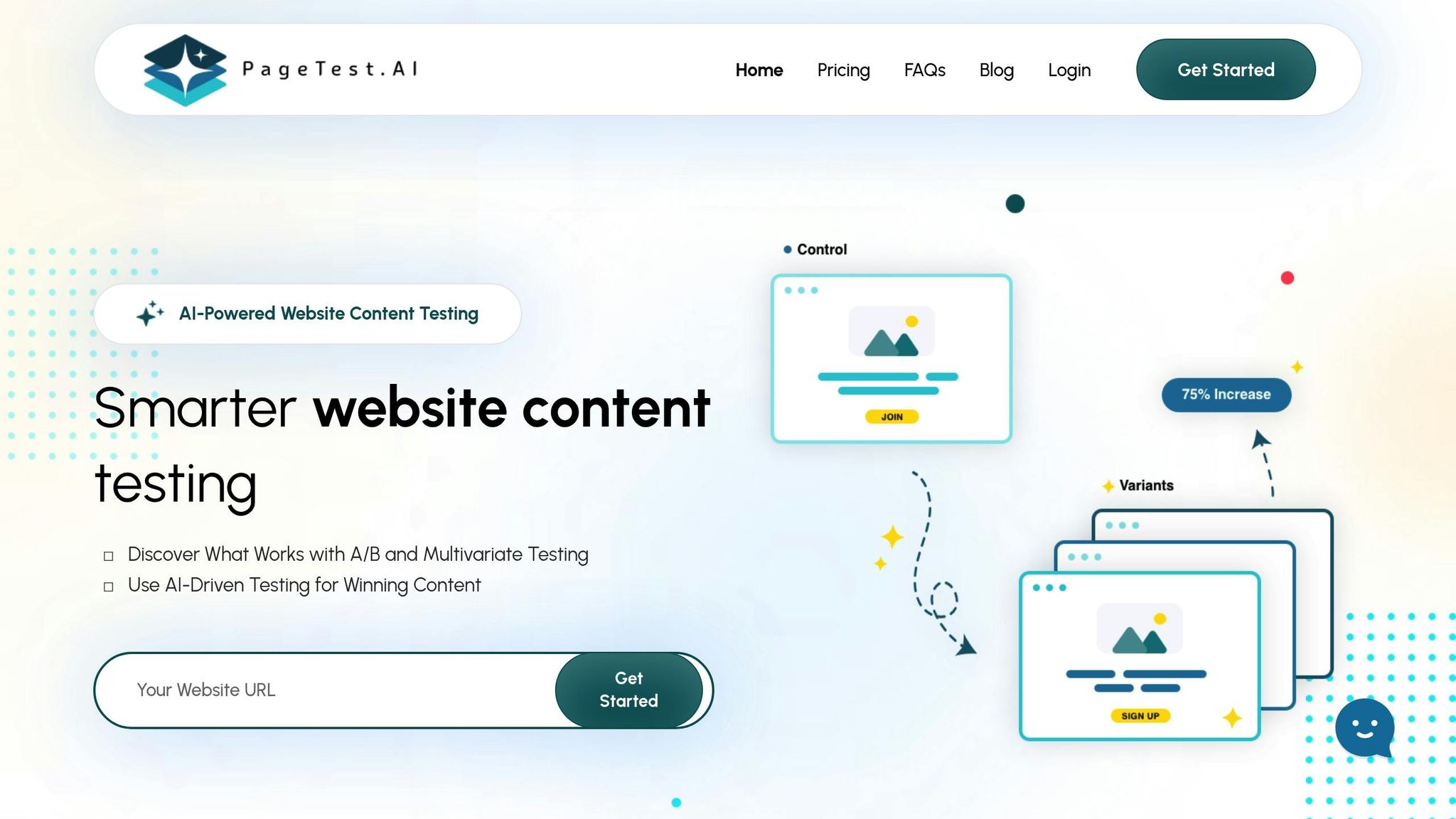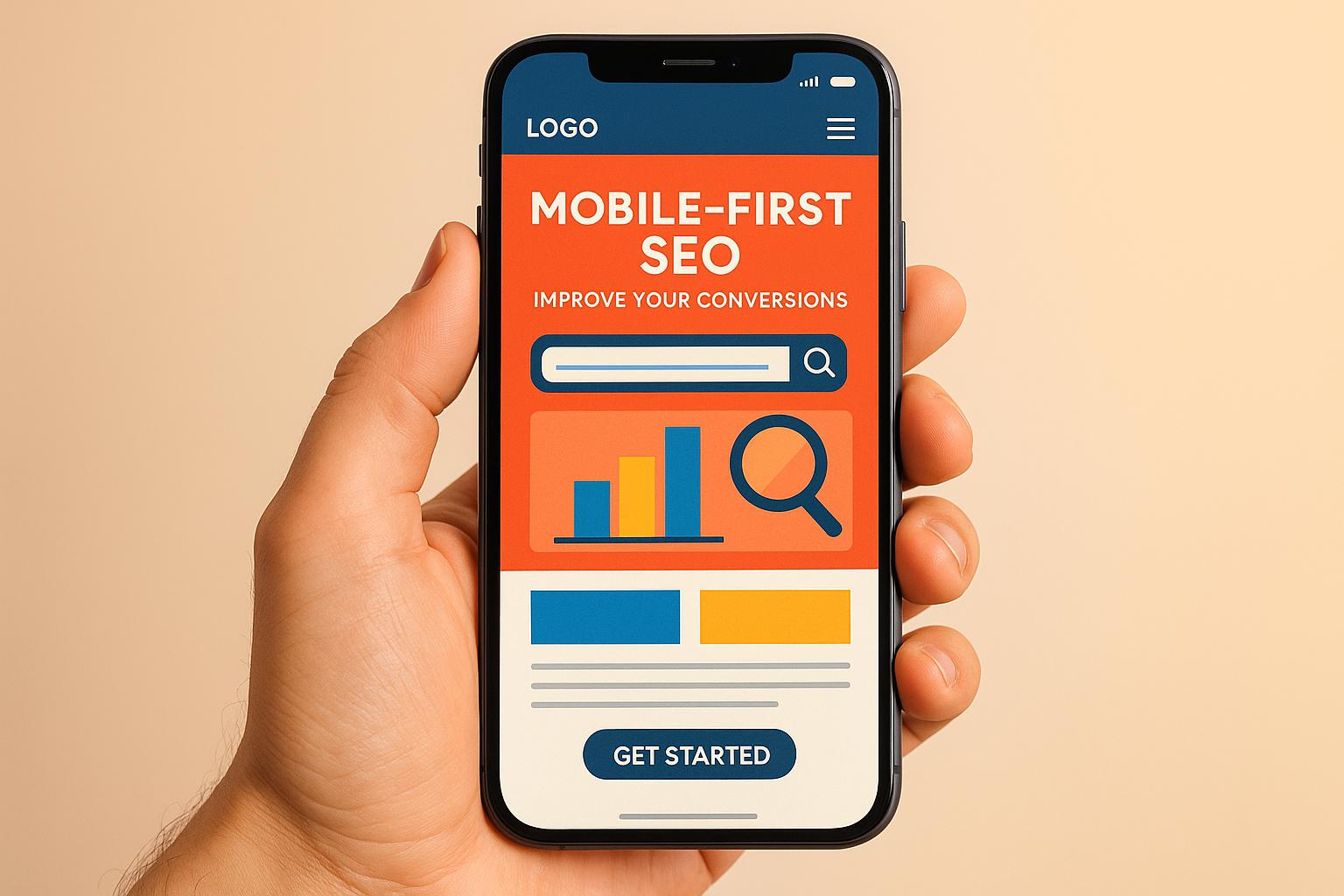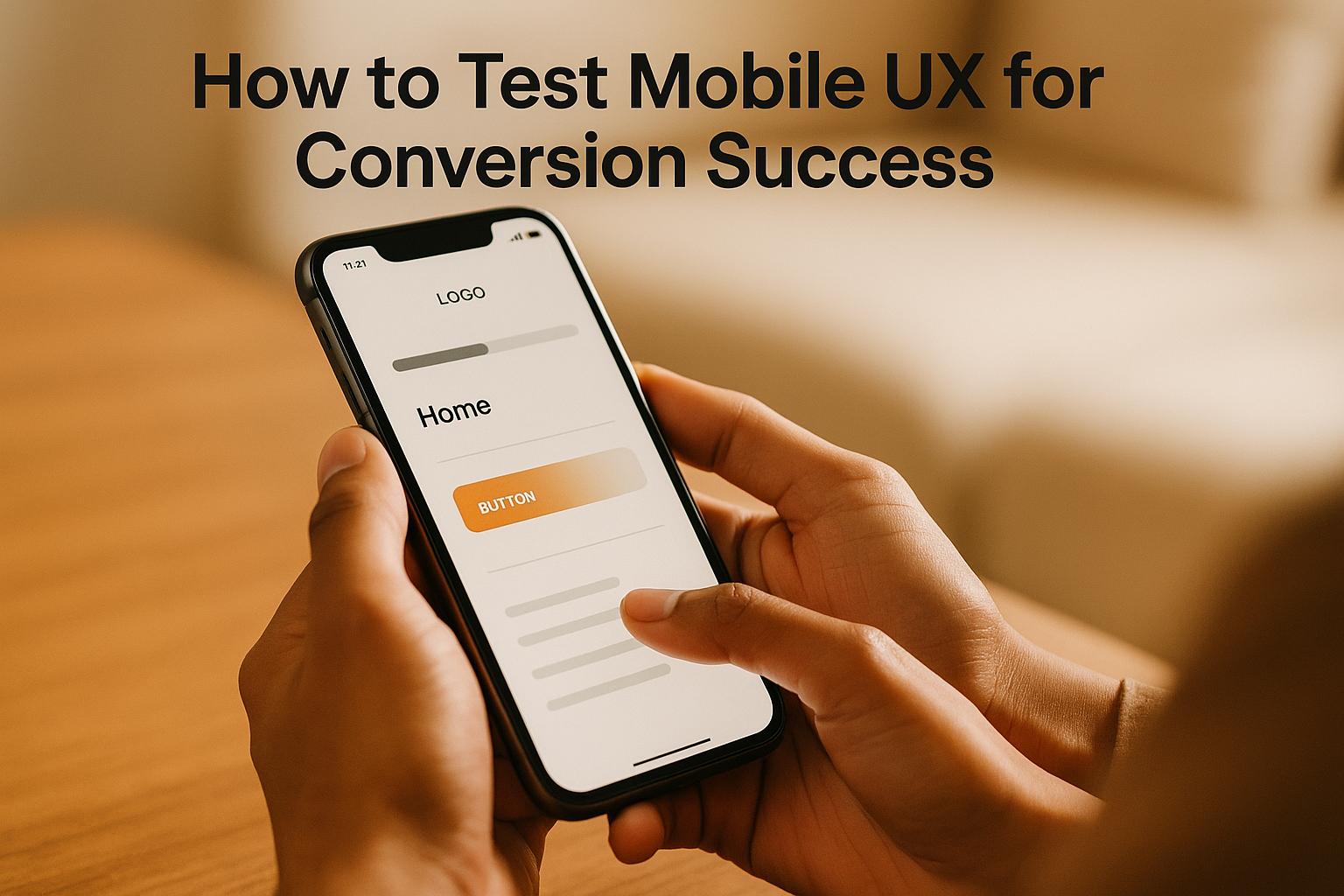

Semantic Search and Featured Snippets: Connection

Semantic Search and Featured Snippets: Connection
 07-10-2025 (Last modified: 07-10-2025)
07-10-2025 (Last modified: 07-10-2025)
Semantic search and featured snippets are changing how search engines deliver results. Here’s the gist:
- Semantic search focuses on understanding the meaning and intent behind queries, not just matching keywords.
- Featured snippets, often called “position zero”, provide quick, direct answers to user questions at the top of search results.
These two technologies work together, with semantic search helping search engines pick the most relevant and context-aware content for snippets. For creators, this means focusing on clear, concise, and intent-driven content, especially as voice and conversational searches grow.
Tools like PageTest.AI simplify this process by testing content variations for snippet optimization. It uses AI to refine content based on user behavior, helping businesses secure top spots in search results. However, human oversight remains critical to ensure quality and alignment with search engine guidelines.
To thrive in this competitive space, prioritize creating content that directly answers user questions and aligns with modern search algorithms.
What Is Semantic SEO For Featured Snippets? – Marketing and Advertising Guru
1. PageTest.AI

PageTest.AI integrates artificial intelligence into content optimization, focusing on helping businesses secure featured snippets in search results. Its approach aligns with modern semantic search by analyzing how content variations perform based on user intent and search behavior, moving beyond traditional A/B testing methods.
AI Capabilities
The platform’s AI engine creates content variations for elements like headlines, CTAs, button text, and product descriptions. By examining user behavior and engagement data, it suggests high-performing alternatives that resonate with semantic search requirements. Metrics such as clicks, engagement, time on page, and user behavior are used to measure success.
PageTest.AI also tracks key behavioral indicators like scroll depth, click events, and navigation patterns across the website. This helps identify which content variations not only attract attention but also sustain user engagement – critical for maintaining featured snippet rankings.
With its multivariate testing engine, PageTest.AI can evaluate multiple content variations simultaneously. This enables marketers to quickly determine which strategies are most effective for driving semantic search traffic. As search engines increasingly prioritize content that reflects strong user engagement, this capability becomes a vital tool for snippet optimization.
Snippet Optimization Support
When it comes to featured snippets, PageTest.AI helps businesses generate and test concise, semantically relevant answers tailored to user intent. The platform creates variations that incorporate long-tail keywords and structured formatting, both of which are key factors for snippet selection. By experimenting with responses to common “what is”, “how to”, and “why” queries, businesses can improve their chances of earning top positions in search results.
The content generated by PageTest.AI uses context-rich, semantically related phrasing, improving its ability to match the complex queries processed by modern search engines. This semantic focus ensures that the content aligns with how search engines now interpret relationships between concepts, rather than relying solely on exact keyword matches.
Performance Tracking
PageTest.AI offers real-time analytics to monitor how different content variations perform in terms of click-through rates, engagement, and user behavior. These insights help businesses understand which variations successfully capture featured snippets and drive meaningful interactions.
This performance tracking allows for continuous refinement based on up-to-date data. Marketers can quickly identify which strategies yield better snippet placements and adjust their content accordingly. This iterative process is essential in the ever-changing world of semantic search, where user behavior and search trends are constantly evolving.
sbb-itb-6e49fcd
Pros and Cons
PageTest.AI brings a mix of strengths and challenges to snippet optimization – features that businesses should weigh carefully before diving in.
| Feature | Pros | Cons |
|---|---|---|
| AI Capabilities | Quickly creates content variations packed with related keywords, synonyms, and contextually relevant phrases, aligning with modern search algorithms | Requires ongoing human oversight to ensure quality and adherence to Google’s ever-changing algorithms |
| Snippet Optimization Support | Allows testing of various headline styles, paragraph formats, and answer box designs that mirror featured snippet formats like definition boxes, lists, and tables | Success depends on integration with a broader SEO plan and may offer limited customization for highly technical or niche topics |
| Performance Tracking | Delivers real-time analytics on user engagement, click-through rates, and behavior for each content variation, helping identify the best-performing snippets | Analytics may not match the depth of dedicated SEO tools, requiring additional analysis for a full optimization picture |
| No-Code Implementation | Easy to use for non-technical teams, with straightforward deployment across popular website builders, making it accessible to a wide range of marketing teams | May not fully meet the needs of complex technical requirements or highly specialized content demands |
The table outlines the platform’s main features, but let’s dig into their practical impact. One standout element is its AI-driven content creation, which is crucial since a whopping 82% of featured snippets are paragraph-based, typically running 40-60 words in length.
However, SEO experts emphasize that human involvement is non-negotiable. Regular oversight ensures the content aligns with brand voice, maintains accuracy, and complies with search engine rules. The sweet spot lies in combining AI’s speed and efficiency with human expertise – letting the AI handle content generation and testing, while humans fine-tune for tone and correctness.
Research shows that optimizing for featured snippets can increase click-through rates by up to 30% and improve visibility in “position 0”. PageTest.AI’s multivariate testing speeds up the process of finding winning formats, but its success hinges on integrating it into a consistent and well-rounded SEO strategy.
Conclusion
Semantic search has reshaped how featured snippets are optimized, shifting the focus from simple keyword matching to understanding context and user intent. For content creators, this means aligning strategies with these evolving dynamics is no longer optional – it’s crucial.
Featured snippets often consist of concise 40–60 word paragraphs, making them a prime opportunity to drive organic traffic and boost brand visibility. The secret? Creating content that directly addresses user questions while presenting information in clear, easily extractable formats. Google’s semantic search capabilities now prioritize content that aligns with user intent, ensuring the most contextually relevant answers make it to the top.
AI-powered tools like PageTest.AI are game-changers for content optimization. By automating content testing and tracking engagement metrics, these tools eliminate the guesswork. They allow creators to test multiple content variations, analyze performance, and refine their strategies with data-driven insights. This approach ensures content not only meets user needs but also maximizes search visibility.
For businesses aiming to dominate featured snippets, integrating AI-driven testing tools into their content workflow is a smart move. Combining contextual relevance, concise structuring, and iterative testing provides a competitive edge. As search algorithms continue to advance, organizations that adapt their strategies to match this semantic sophistication will stay ahead in the race for visibility and organic traffic growth.
FAQs
How does semantic search enhance the selection of featured snippets in search results?
Semantic search plays a key role in refining how featured snippets are chosen by emphasizing the context and intent behind what users are searching for. Rather than just matching keywords, it digs into the underlying meaning of a query to provide the most accurate and relevant answers.
When your content aligns closely with user intent and answers their questions in a clear and thorough way, it’s more likely to be picked as a featured snippet. This not only boosts your content’s visibility but also positions it as a reliable and authoritative source of information.
How does AI help optimize content for featured snippets, and what role does PageTest.AI play in this process?
AI plays a key role in optimizing content for featured snippets by identifying search intent and helping create well-structured, concise, and authoritative material. This ensures that search engines can easily recognize and display the content users are looking for. By understanding how people search and what they expect, AI helps fine-tune content to meet those expectations effectively.
PageTest.AI takes this a step further with its AI-powered platform designed to test and refine website elements like headlines, CTAs, and product descriptions. Its no-code interface allows marketers to quickly adjust content to align with search intent, increasing the chances of appearing in featured snippets and AI-driven search results. This not only boosts visibility but also enhances user engagement.
How can content creators optimize their content to align with search algorithms and appear in featured snippets?
To improve your chances of landing a featured snippet, focus on crafting content that answers common questions directly. Use headings phrased as questions, like What is…? or How to…?, and provide clear, concise answers – aim for about 40–50 words. Structuring information with bullet points or numbered lists can also help search engines identify and pull key details.
Take advantage of semantic SEO by understanding the intent behind users’ searches. Naturally include synonyms, related terms, and keyword variations throughout your content. This strategy not only aligns with modern search algorithms but also boosts your content’s relevance and visibility in search results.
Related Blog Posts
say hello to easy Content Testing
try PageTest.AI tool for free
Start making the most of your websites traffic and optimize your content and CTAs.
Related Posts
 24-11-2025
24-11-2025
 Becky Halls
Becky Halls
How Social Media Marketing Will Change in 2026: Stop Posting, Start Getting Found
Social media is no longer a place people visit after they have finished “real” research. For a huge chunk of users, especially under 35, TikTok, Instagram, YouTube and Reddit are where research starts: which product to buy, which tool to try, what restaurant to visit, how to fix a problem. In 2025, almost two thirds […]

 20-11-2025
20-11-2025
 Ian Naylor
Ian Naylor
How Mobile-First SEO Impacts Conversions
Optimizing for mobile is crucial for improving user experience and boosting conversion rates, as mobile traffic continues to rise.

 18-11-2025
18-11-2025
 Ian Naylor
Ian Naylor
How to Test Mobile UX for Conversion Success
Enhancing mobile UX is crucial for boosting conversions. Explore effective strategies and testing methods to improve user experiences on mobile devices.
